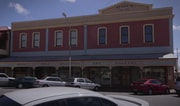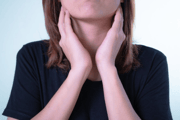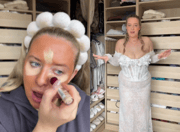
Every day in Australia, 273 people ended up in hospital because of a fall.
For many, it was just another number—but for Australians over 65, the risk loomed far larger.
A single misstep could change a life in an instant.
Falls were confirmed as Australia’s leading cause of injury hospitalisation and death, representing 43 per cent of injury hospitalisations and 42 per cent of injury deaths, according to the Australian Institute of Health and Welfare.
‘Falls are physically very costly and the leading cause of injury-related hospitalisation in persons aged 65 years and over’
The impact on older Australians and their families went beyond statistics.
People aged 65 and over were eight times as likely to be hospitalised and 68 times as likely to die from a fall than those aged 15–64.
Analysis by iSelect of health data from July 2023 to June 2024 revealed that while falls accounted for the largest portion of injury hospitalisations, the demographic story was complex.
Almost two-thirds of hospitalisations due to falls were female, yet men had a 36.1 per cent higher overall admission rate for injuries and a higher age-standardised rate of deaths from falls.
Quick home safety checklist
Remove loose rugs or secure them with non-slip backing
Ensure adequate lighting in all areas, especially stairs and hallways
Install grab bars in bathrooms and near toilets
Keep frequently used items within easy reach
Clear walkways of clutter, electrical cords, and obstacles
Wear supportive, well-fitting shoes with non-slip soles
Check that handrails were secure and extended the full length of stairs
The increased vulnerability of older adults was not just about age—it reflected changes in bone density, muscle tone, balance and eyesight, which also influenced recovery and quality of life after a fall.
When falls occurred, the consequences were often severe: half of hospitalised falls involved a fracture, and open wounds were the next most common injury.
Falls were the leading cause of hip fracture hospital admissions, accounting for nine in ten cases.
The financial costs were substantial, with falls costing $4.3 billion annually, equivalent to $153 per capita, and hospitalised older Australians had an average length of stay of 9.5 days, though recovery often continued long after discharge.
Did you know?
Did you know? After falling, 48 per cent of older people reported a fear of falling and 25 per cent reduced their activities, creating post-fall syndrome that could limit independence even without serious injury.
Most falls requiring hospitalisation occurred in the home, over half on single-level surfaces, while seven per cent involved stairs or steps.
The good news was that falls were largely preventable, with multiple component group exercise, home exercise programs, tai chi and multifactorial interventions—including individual risk assessment—reducing both the rate and risk of falls.
Proven fall prevention strategies
Regular exercise programs focusing on balance and strength
Tai chi classes specifically designed for older adults
Professional home safety assessments
Regular vision and hearing checks
Medication reviews to identify fall-risk drugs
Proper nutrition to maintain bone density
Australian states supported fall prevention, with Western Australia’s 'Stay on Your Feet' initiative and Queensland Health’s bathroom safety resources offering practical guidance.
Admission rates due to falls rose consistently with age—4.5 per cent per year for men (doubling every 15.7 years) and 7.9 per cent per year for women (doubling every 9.1 years) beyond age 40—highlighting the increasing importance of prevention.
Simple home modifications could make a significant difference, and many councils offered home safety assessments, while physiotherapists could design exercises to improve balance and strength.
Preventive action was not about limiting life—it ensured it could be lived fully.
What This Means For You
Falls were Australia’s leading cause of injury hospitalisation and death, with older adults most at risk, making it vital for anyone over 60 to understand their personal risk and take action at home.
Post-fall syndrome could affect confidence, mobility, and independence even when no serious injury occurred, meaning a single fall could quietly change daily life and limit the activities seniors enjoy.
Most hospitalised falls happened at home, often on single-level surfaces, reminding older Australians that danger can be closer than they realise—right in their living rooms, kitchens, or hallways.
Evidence-based strategies, such as targeted exercise, professional home safety assessments, and reviewing medications that increase fall risk, were proven to effectively reduce the likelihood of falls and help maintain independence and quality of life.
Here’s the combined
-
block formatted according to your instructions:
Injury in Australia: Falls — Falls are Australia’s leading cause of injury hospitalisation and death, representing 43 per cent of hospitalisations and 42 per cent of injury deaths.
https://www.aihw.gov.au/reports/injury/falls
Falls in older Australians 2019–20: hospitalisations and deaths among people aged 65 and over, Summary — Australians aged 65 and over were 8 times as likely to be hospitalised and 68 times as likely to die from a fall than those aged 15–64.
https://www.aihw.gov.au/reports/inj...ians-2019-20-hospitalisation/contents/summary
Falls in older Australians 2019–20: hospitalisations and deaths among people aged 65 and over, Summary — Almost two-thirds of hospitalisations due to falls were female, though males had a higher age-standardised death rate.
https://www.aihw.gov.au/reports/inj...ians-2019-20-hospitalisation/contents/summary
Falls in older Australians 2019–20: Impact of falls among older Australians — Older adults are at higher risk due to lower bone density, reduced muscle tone, and balance or vision issues, affecting recovery and quality of life.
https://www.aihw.gov.au/reports/inj...tents/impact-of-falls-among-older-australians
Falls in older Australians 2019–20: Summary — Half of hospitalised falls involved a fracture, and falls are the leading cause of hip fracture hospital admissions.
https://www.aihw.gov.au/reports/inj...ians-2019-20-hospitalisation/contents/summary
Falls in older Australians 2019–20: Impact of falls among older Australians — Falls cost $4.3 billion annually, with an average hospital stay of 9.5 days for older adults.
https://www.aihw.gov.au/reports/inj...tents/impact-of-falls-among-older-australians
Info about falls | Australia and New Zealand Falls Prevention Society — After a fall, 48 per cent of older people reported fear of falling, and 25 per cent curtailed activities.
https://www.anzfallsprevention.org/info/
Older people and falls – causes, treatments and prevention | healthdirect — Hip fractures can lead to loss of independence and increased reliance on carers or aged care facilities.
https://www.healthdirect.gov.au/falls
Falls requiring hospitalisation occur more frequently in older adults, most commonly at home on single-level surfaces.
https://www.aihw.gov.au/reports/injury/falls
Info about falls | Australia and New Zealand Falls Prevention Society — Evidence-based prevention strategies, including exercise, tai chi, home assessments, and medication review, reduce fall risk.
https://www.anzfallsprevention.org/info/
Info about falls | Australia and New Zealand Falls Prevention Society — Hospital admission rates due to falls rise consistently with age, increasing 4.5 per cent per year for men and 7.9 per cent per year for women beyond 40.
https://www.anzfallsprevention.org/info/
Older people and falls – causes, treatments and prevention | healthdirect — Queensland Health provides practical guidance on bathroom safety to reduce fall risk.
https://www.healthdirect.gov.au/falls
Older people and falls – causes, treatments and prevention | healthdirect — Western Australia Health’s Stay on Your Feet program offers comprehensive advice for maintaining safety and stability.
https://www.healthdirect.gov.au/falls
Have you made modifications to your home to prevent falls, or are you considering joining an exercise program designed for older adults?







